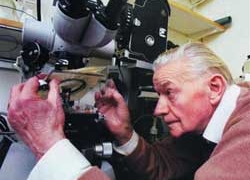 |
Beethoven – The Genius Composer |
Paul Kaufmann, an entrepreneur of Austrian descent currently residing in Danville, California, announced last weekend that he has inherited the remains of the famous composer Ludwig van Beethoven for the past 15 years.
This year, 68-year-old businessman Paul came into possession of this skull by chance. In 1986, he traveled to France to visit relatives and heard about a treasured artifact passed down through many generations in his family.
Upon discovering that it was a human skull, he was surprised and skeptical. However, when he learned it belonged to the genius composer Beethoven, his doubts multiplied.
When Paul’s uncle passed away, he inherited a skull composed of two large pieces and 11 smaller fragments in 1990.
The skull was secretly handed over to Dr. Romeo Seligmann, a history of medicine professor at the University of Vienna, who is also a distant ancestor of Paul, after Beethoven’s grave was excavated in 1863.
The skull is contained within an intricately engraved metal box, notably with the name “Beethoven” inscribed on it. Six years later, Paul contacted San Jose State University to verify the skull’s origin.
The research center had samples of Beethoven’s hair, providing evidence and a basis for conducting DNA tests to confirm the skull’s authenticity.
“There was a hypothesis that Beethoven died from Crohn’s disease, a condition that causes swelling in the bones and marrow. However, upon examining the skull brought by P. Kaufmann, it was found to be of normal size and showed no signs of this disease” – stated William Meredith, the center’s director.
Beethoven’s skull is not publicly displayed for public viewing as it is a sacred relic that deserves respect.
There are still many uncertainties surrounding Ludwig Beethoven’s death, such as the possibility that he was poisoned with lead or suffered from a hereditary disease, as many renowned physicians attempted to treat this brilliant composer for his hearing impairment and volatile temperament.
The skull continues to be studied by researchers at San Jose State University. Once their investigations are complete, they will return the skull to the German or Austrian authorities. “But that’s a matter for many years down the line,” said Paul Kaufmann, the skull’s current owner.




















































